Baguette Bread Recipe
If you’re thinking about whipping up some homemade bread, why not try this Baguette Bread Recipe? With a simple classic approach and clear, step-by-step instructions, you’ll find making this delicious bread is both easy and rewarding!
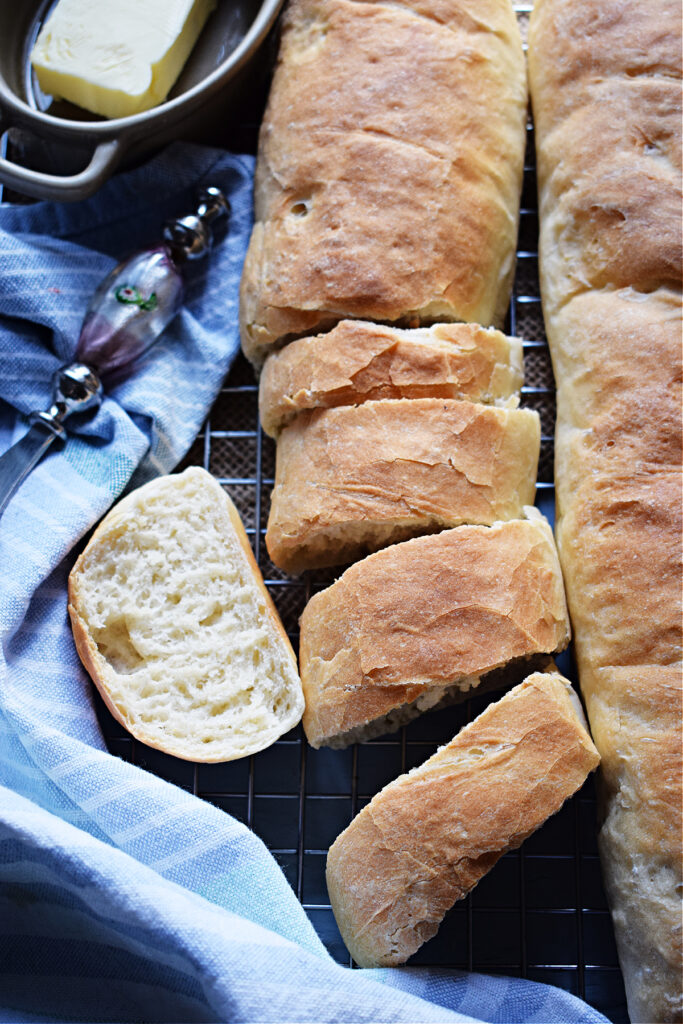
Why Make Your Own Baguette?
Have you tried making your own bread? If I’m honest, it’s not my regular routine, though I do whip up Fluffy White Dinner Rolls and Stove Top Naan Bread quite frequently. Every so often, however, I can’t resist the charm of a fresh Baguette. It pairs perfectly with soups, is delightful for bruschetta, or simply tasty on its own. The secret to homemade bread is organization; start early, as it does take some time, but the aroma of a warm loaf is unbeatable! If you’re short on time, consider trying No Yeast Whole Wheat Bread that’s done in just an hour!

What’s This Bread Like?
- Difficulty: I’d rate this Baguette Bread recipe as medium difficulty. It requires only a few ingredients, and the hands-on time is minimal. However, achieving that perfect baguette texture does call for careful attention to the instructions.
- Taste: This bread embodies the essence of a classic Baguette—crunchy on the outside, soft and fluffy on the inside.
- Serving: The recipe yields two delightful baguette loaves!
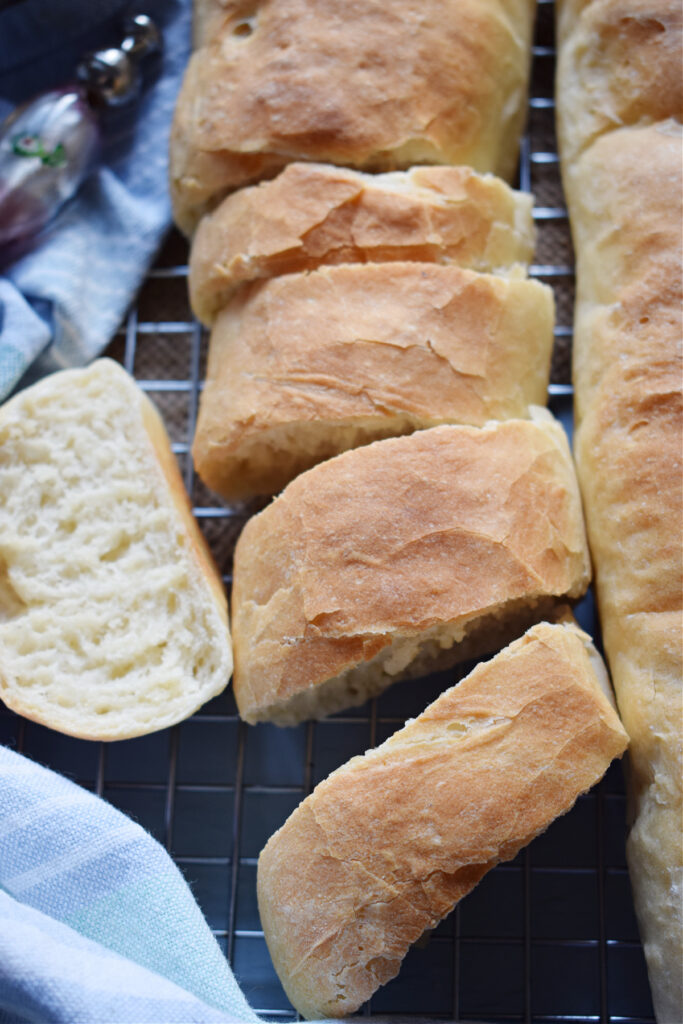
Ingredients
- Flour: For this recipe, I prefer using bread flour, known for its higher protein content that helps in the bread’s structure.
- Yeast: Instant yeast works wonders here. It’s super convenient, requiring no prior activation before mixing.
- Sugar: A tablespoon of granulated white sugar aids in activating the yeast, promoting a successful rise.
- Salt: Adding some salt not only builds flavor but also strengthens the dough.
- Water: Warm water is essential for activating the yeast and producing a lovely rise.
Note: The comprehensive recipe and all necessary ingredients are provided in the recipe card at the end of this post.
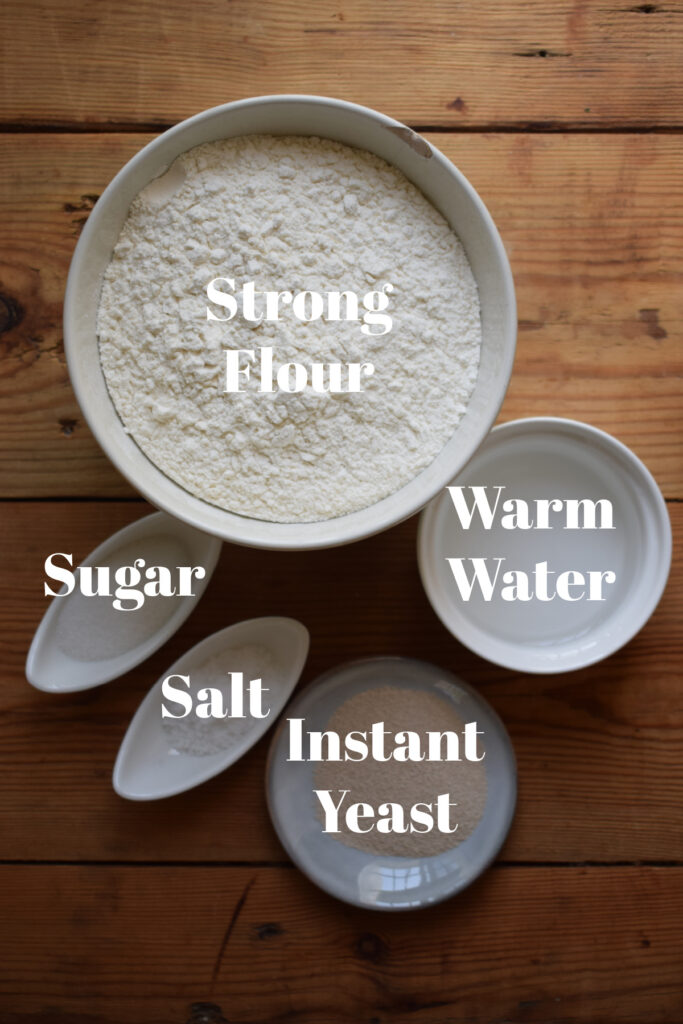
Instructions
- Combine dry ingredients: In a large mixing bowl, whisk together the flour, yeast, sugar, and salt. Create a small well in the center of the flour mixture.
- Make a shaggy dough: Pour ½ cup (120 ml) of warm water into the well. Use a fork or your hands to gradually pull in the flour from the edges until you’ve formed a shaggy, dry dough.
- Form a dough ball: Slowly incorporate the remaining 1 cup (240 ml) of warm water, stirring continuously until you have a soft dough that isn’t too sticky.
- Knead and let rise: Transfer the dough ball onto a lightly floured surface. Gently knead it by punching down and folding it over itself for about 3 minutes until it feels soft and elastic. Return the dough to its bowl, cover it with a damp tea towel, and allow it to rise until it’s doubled in size, approximately 1 hour.
- Form dough into equal portions: After the dough has risen, punch it down with your fist. Remove it from the bowl and divide it into two equal pieces, rolling each into a ball.
- Shape the dough into baguettes: Taking one ball, place it on a floured surface and start stretching it into a long shape. Fold it over itself while stretching until you reach a length of about 16 inches (approx. 40 cm) and a width of 2 inches (approx. 5 cm).
- Let the baguettes rise: Place the shaped dough on a greased baking tray, ensuring they resemble the classic baguette form. With a sharp serrated knife, make several diagonal slits on top of each loaf. Cover with a damp tea towel, allowing them to rise again for about 1 hour.
- Bake the bread: Preheat your oven to 400°F (200°C). Position the baguettes in the lower third of the oven and spray water to create steam. Bake for 15 to 18 minutes, or until they develop a golden crisp crust and sound hollow when tapped on the bottom.
- Serve/store: Once baked, remove them from the oven and let them cool on a wire rack. Enjoy fresh or store in a zip lock bag in the freezer for up to one month.
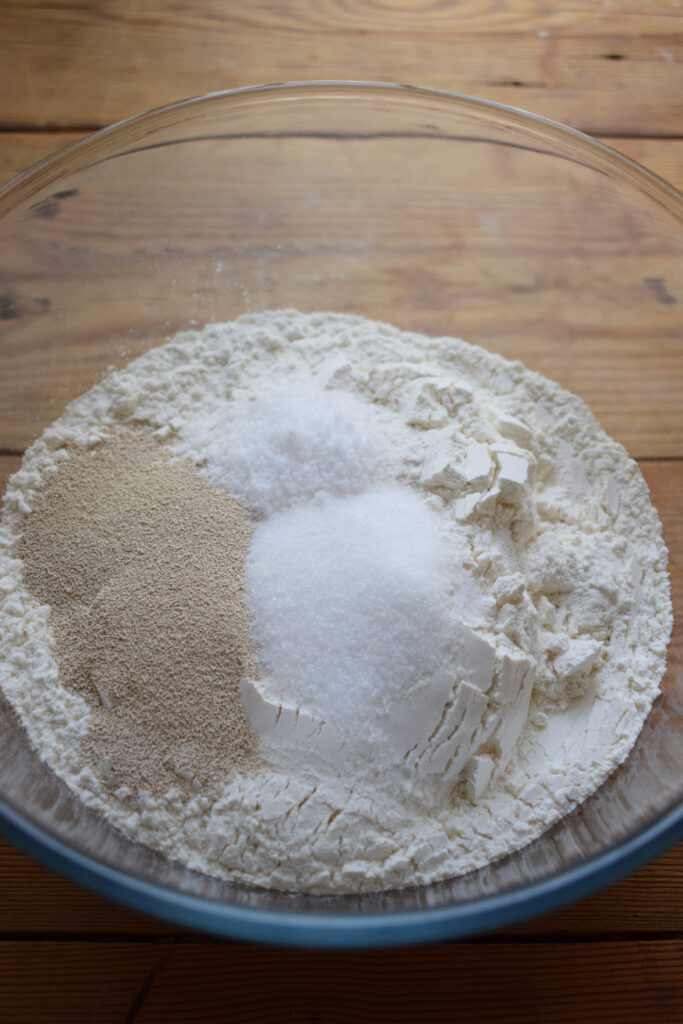
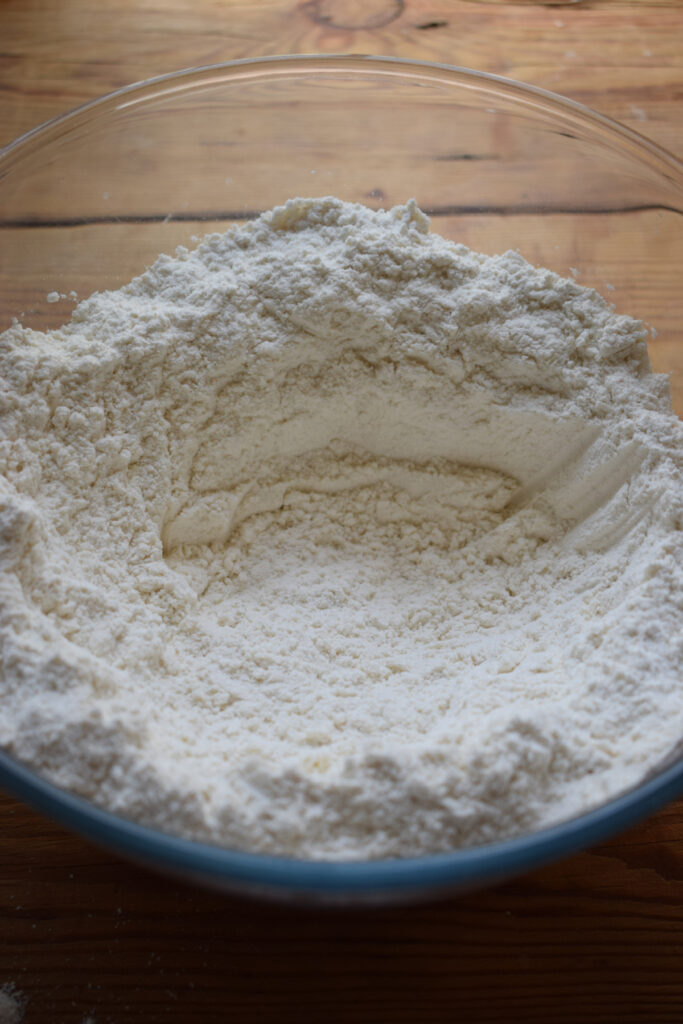
Possible Substitutions
While this recipe is quite straightforward, here are some yeast alternatives:
- Fresh Yeast: Comes in a block form and must be refrigerated. Dissolve it in warm water before mixing.
- Active Dry Yeast: Requires dissolving in warm water before usage.
- Instant Yeast: Simple and convenient, added directly to dry ingredients.
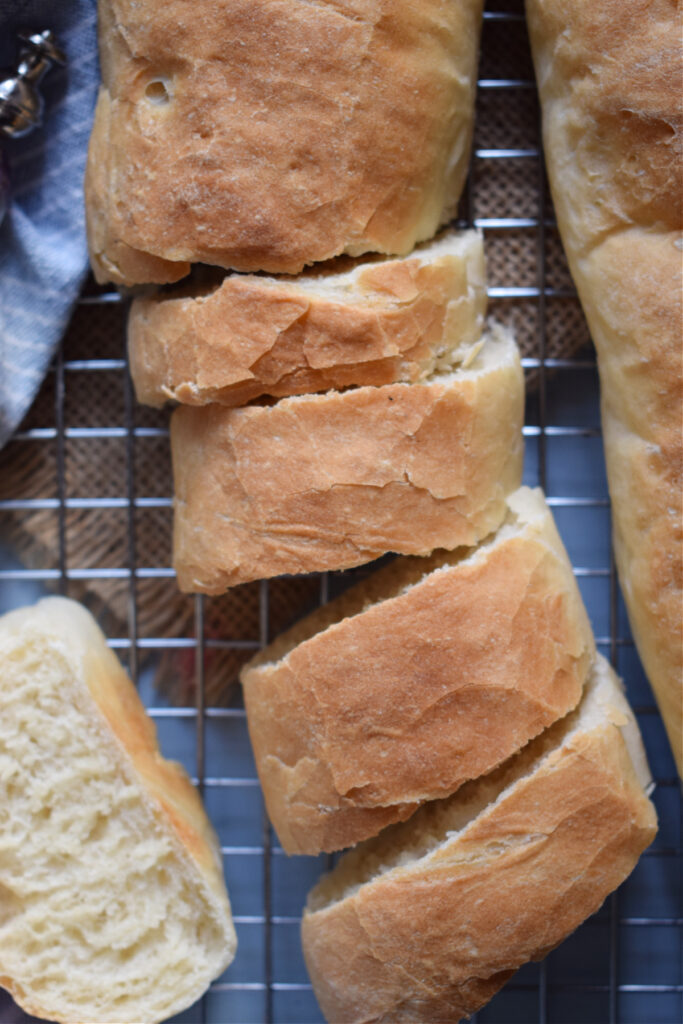
What to Serve with Baguette Bread
This delightful baguette pairs well with various dishes. It’s perfect for dipping in olive oil, serving alongside hearty soups, or enjoying with cheese and charcuterie for a savory platter. You might also use it as a base for a delicious bruschetta topped with fresh tomatoes and herbs!
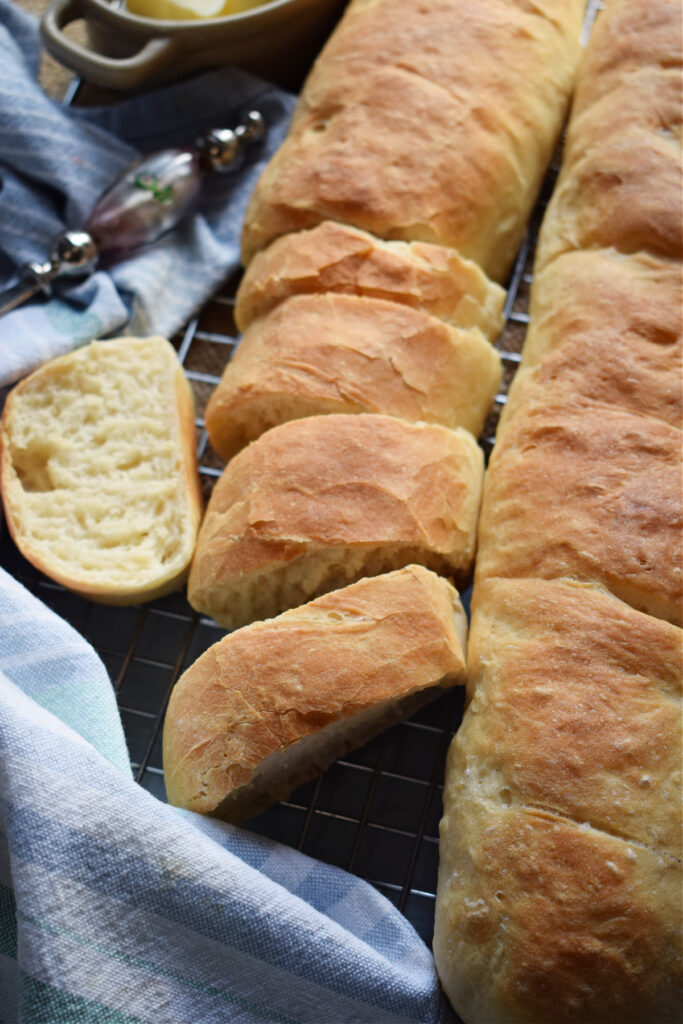
Frequently Asked Questions
The major difference lies in protein content. Bread flour has higher protein, leading to more gluten formation which contributes to better rise and texture.
Yes, you can! While it won’t yield the same results as bread flour, you can still achieve a decent loaf.
The dough typically takes about 1 hour to rise until it doubles in size, but this can vary based on your kitchen temperature.
Absolutely! Once cooled, you can freeze the bread in zip lock bags for up to one month.
If your dough isn’t rising, it might be because the yeast was either too old or the water temperature was incorrect. Always ensure yeast is fresh and at the right temperature to activate.











